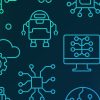CIOs in the public sector of Australia and New Zealand are gearing up for a tough year ahead. Economic constraints mean they’re dealing with tight tech budgets, but there’s a spark of optimism surrounding AI investments that might boost productivity.
Gartner recently surveyed CIOs in the public sector and found that 94% prioritize data analytics for 2025, followed closely by cybersecurity at 91% and application modernization at 85%. Dean Lacheca, a VP analyst at Gartner, pointed out that an austerity mindset is influencing government agencies. CIOs face flat budgets, especially when you factor in inflation, and there’s little inclination for large ICT projects.
“This might be one of the leanest times we’ve seen,” Lacheca said, noting that the drive for rapid tech adoption isn’t as strong as it once was. The focus on data analytics and cybersecurity has been steady, but progress is slow, especially with the constant evolution of cyber threats.
He highlighted the Australian federal government’s cybersecurity efforts, acknowledging their work but indicating that the transition to the Essential Eight framework is still lagging.
The push for productivity has become even more pronounced. Gartner’s survey shows that 94% of CIOs are emphasizing productivity outcomes, a significant jump from the previous year. This urgency for efficiency within IT and broader government operations reflects the challenges they face.
Lacheca noted, “You see some high-profile projects still getting funding, yet overall IT investments are tightly squeezed.”
As for emerging technologies, the report highlights three that government CIOs are keen on deploying soon: industry cloud platforms (59%), generative AI (56%), and low-code/no-code platforms (53%).
The shift toward industry cloud platforms signals a move toward standardization across agencies, even if the technology isn’t vastly different. When it comes to AI, Lacheca observed an unexpected level of interest within government. However, after the buzz surrounding generative AI, many CIOs are now more pragmatic about the hurdles in implementing it. They see themselves as risk mitigators, ensuring that the process is managed thoughtfully.
Low-code platforms are gaining traction as well, with CIOs aiming to avoid the pitfalls that led to the outdated, bespoke technologies of the past. These platforms offer a way to address talent shortages in specific tech fields, allowing teams to utilize their existing skills more effectively.
Amidst these challenges, CIOs still feel the need to highlight IT’s value to government operations. Lacheca stated that they’re working to shift away from an outdated perspective of IT as merely a service provider.
Looking ahead, Lacheca hopes for a change in mindset regarding the costs of legacy technology. There’s a pervasive fear around significant IT investments, which often leads to inaction. He believes there needs to be a commitment to addressing these legacy issues to unlock potential productivity gains.






